Previous Day - Next Day
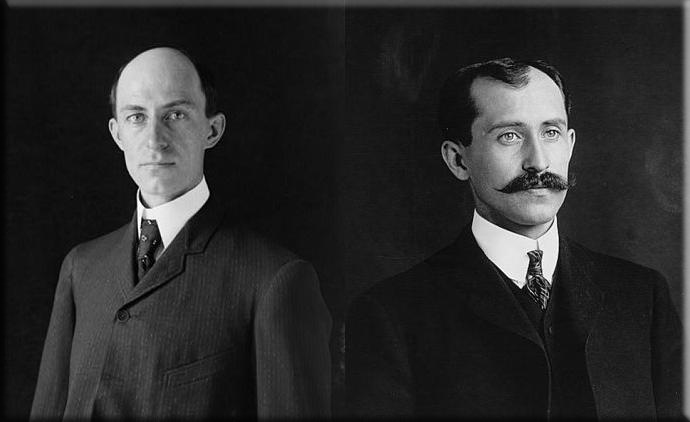
“To even mention all the things the bird must constantly keep in mind in order to fly securely through the air would take a considerable part of the evening... The bird has learned this art of equilibrium, and learned it so thoroughly that its skill is not apparent to our sight. We only learn to appreciate it when we try to imitate it.”
~ Wilbur Wright
Wikiquote (The Wright brothers, Orville (August 19, 1871 – January 30, 1948) and Wilbur (April 16, 1867 – May 30, 1912), were two American brothers, inventors, and aviation pioneers who were credited with inventing and building the world's first successful airplane and making the first controlled, powered and sustained heavier-than-air human flight, on December 17, 1903.)
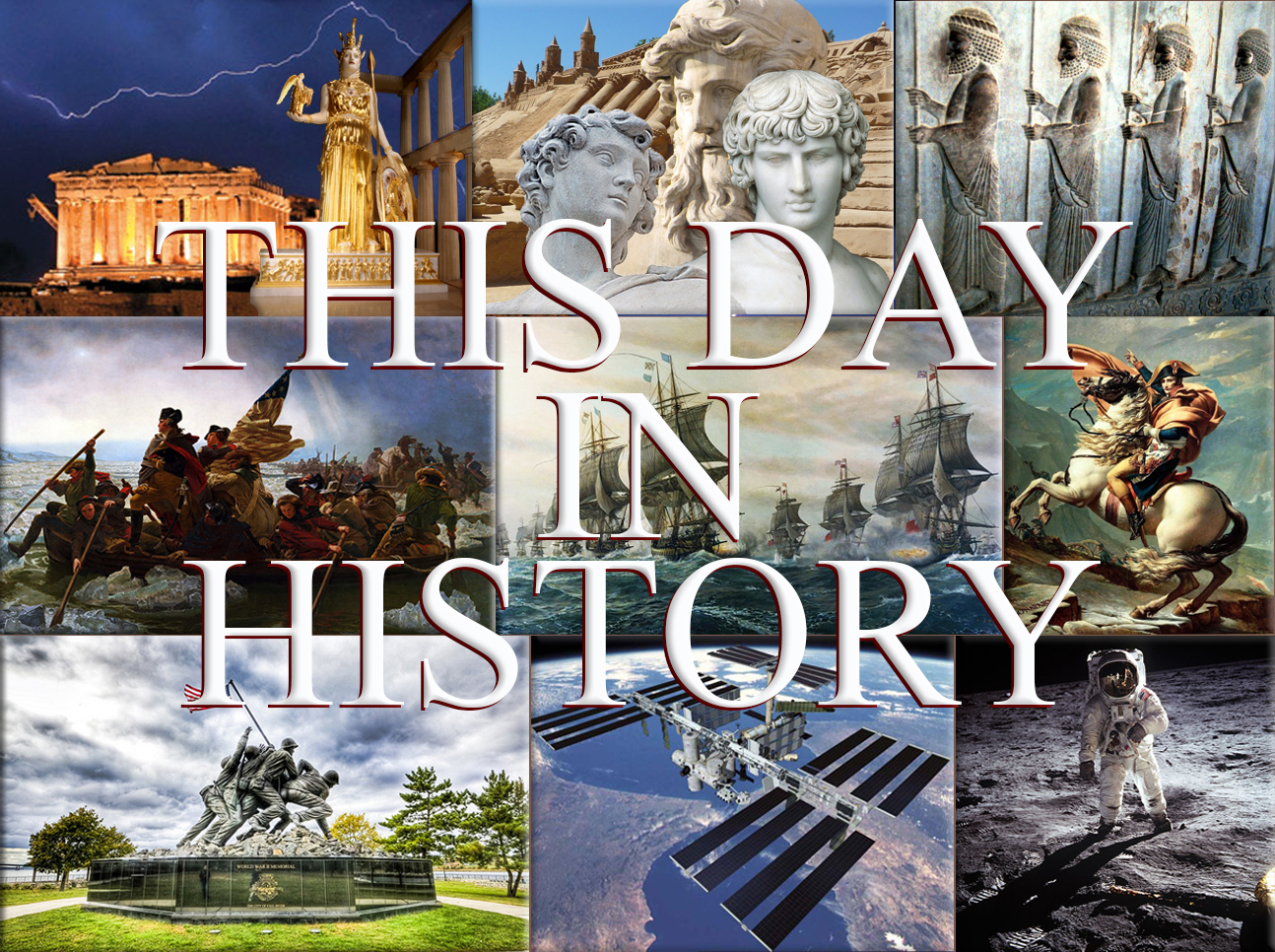
December 17th, 546
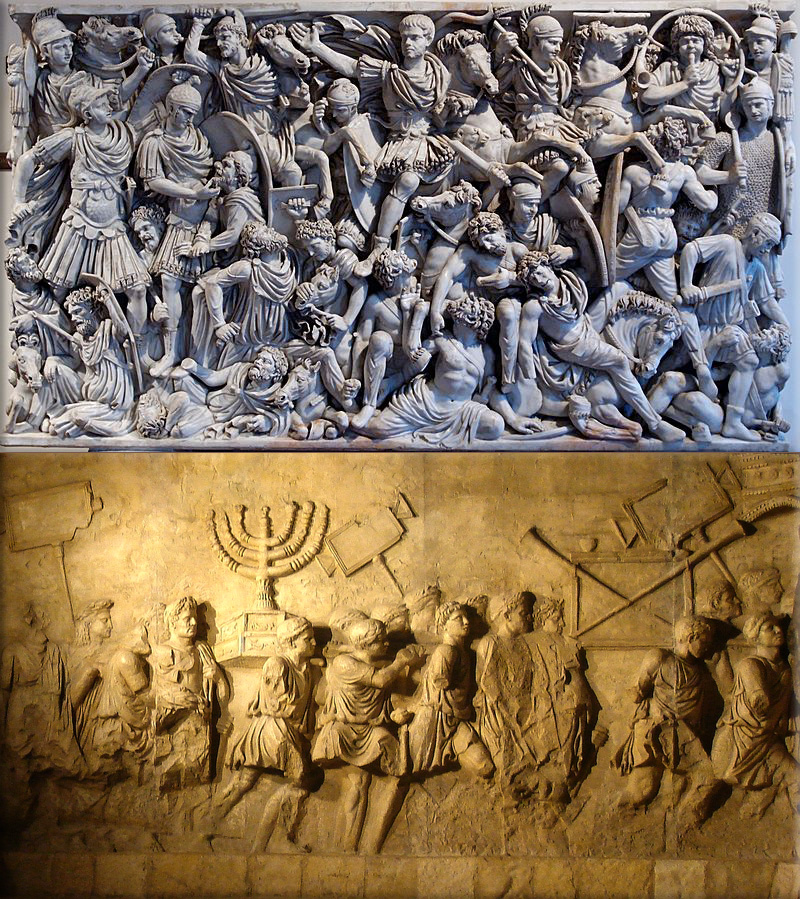
Roman Empire:
546 - Siege of Rome; The Ostrogoths under king Totila plunder the city, by bribing the Byzantine garrison.
Wikipedia Image: Relief from a 3rd-century sarcophagus depicting a battle between Romans and Germanic warriors; the central figure is perhaps the emperor Hostilian / Depiction of the Menorah on the Arch of Titus in Rome.
December 17th, 920

Byzantine Empire (East Roman Empire):
920 - Romanos I is crowned co-emperor of the underage Emperor Constantine VII defeats the Vandals, commanded by King Gelimer.
Wikipedia Image: The Baptism of Constantine painted by Raphael's pupils (1520–1524, fresco, Vatican City, Apostolic Palace); Mural of Saints Cyril and Methodius, 19th century, Troyan Monastery, Bulgaria; Justinian I depicted on one of the famous mosaics of the Basilica of San Vitale, Ravenna; The Greek fire was first used by the Byzantine Navy during the Byzantine-Arab Wars (from the Madrid Skylitzes, Biblioteca Nacional de España, Madrid); Alexios I, founder of the Komnenos dynasty.
December 17th, 942
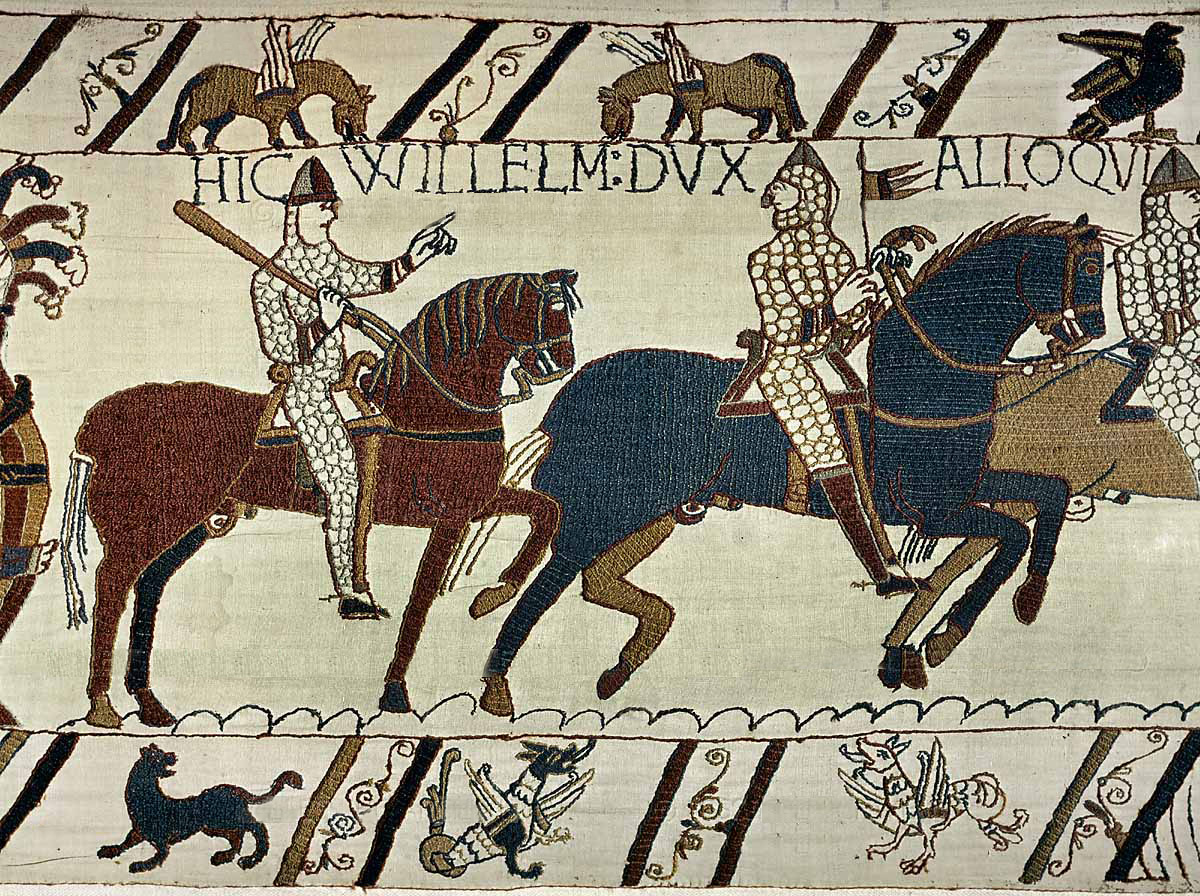
Assassination of William I of Normandy.
Wikipedia Image: William I of Normandy; Bayeux Tapestry, embroidery - Musee de la Tapisserie, Bayeux, France.
December 17th, 1398
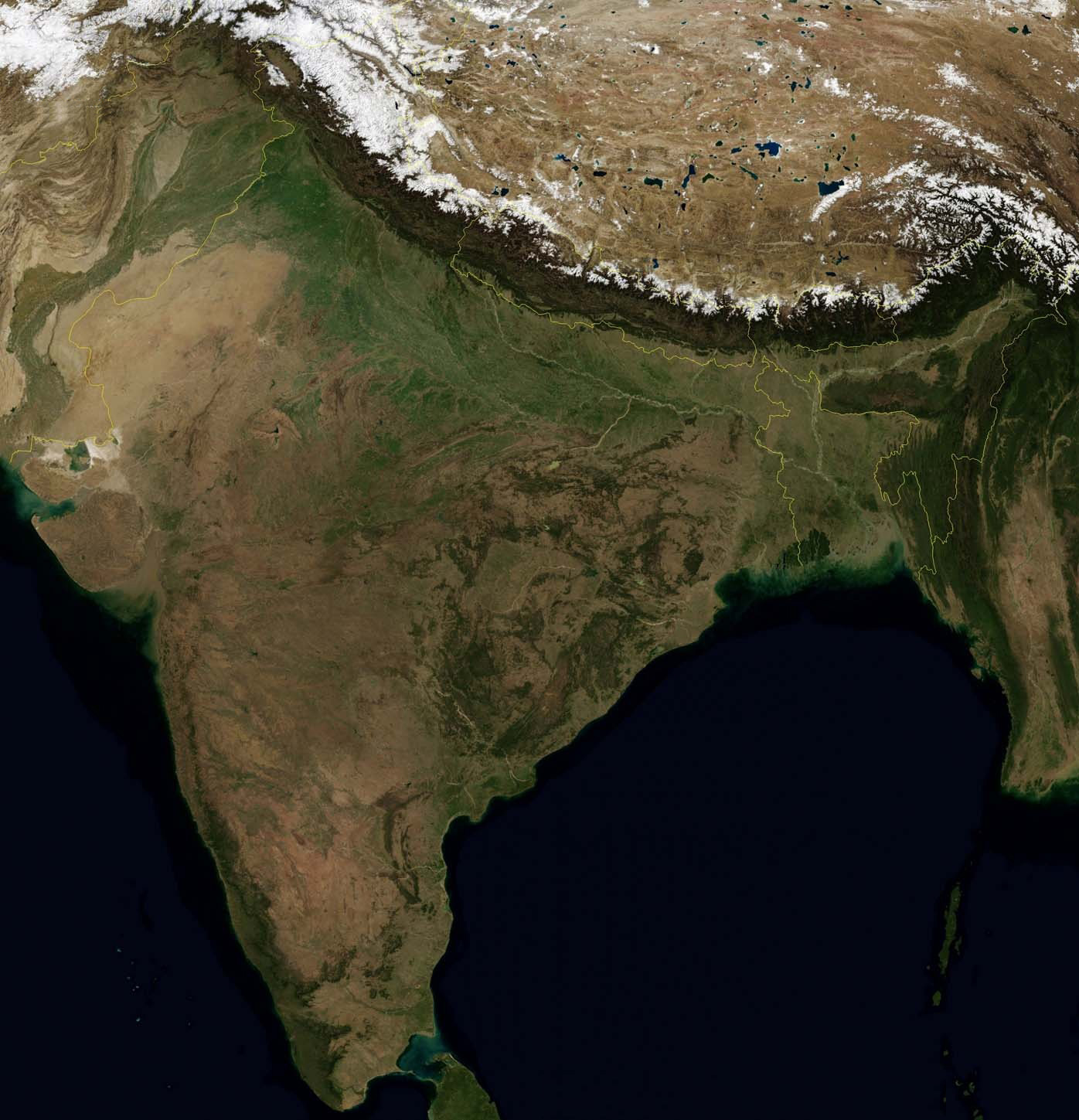
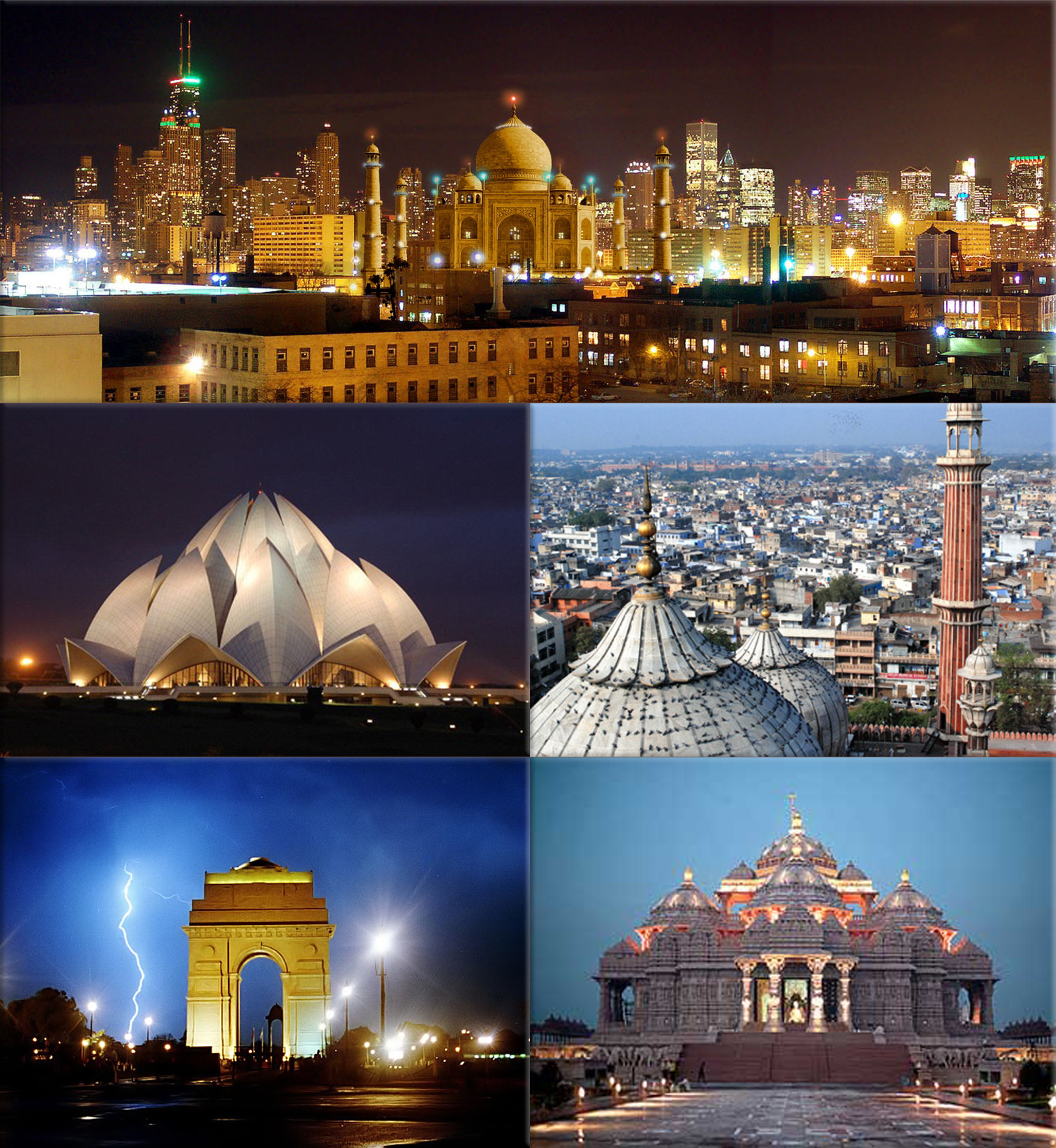
Sultan Nasir-u Din Mehmud armies in Delhi are defeated by Timur.
Wikipedia Image: Map Satellite India, Pakistan, Nepal, Bhutan, Tibet AR, Bangladesh.
Delhi, India skyline at night (depiction); Lotus temple, Humayun's Tomb, India Gate and Akshardham temple.
December 17th, 1538
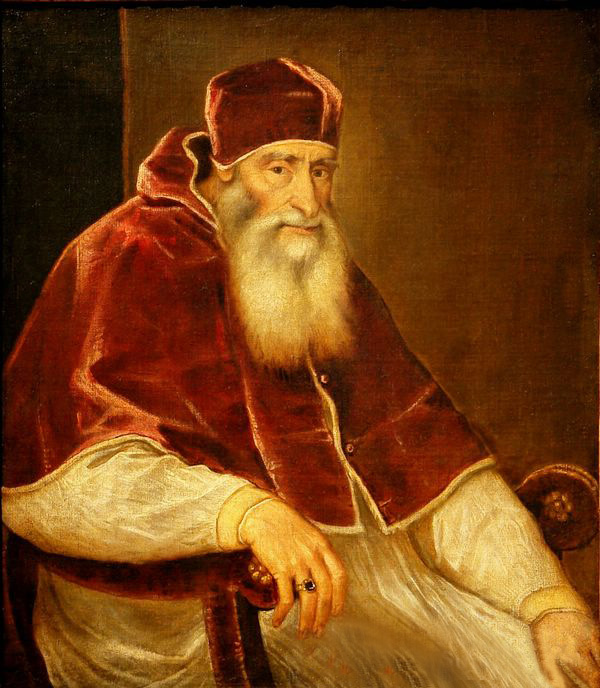
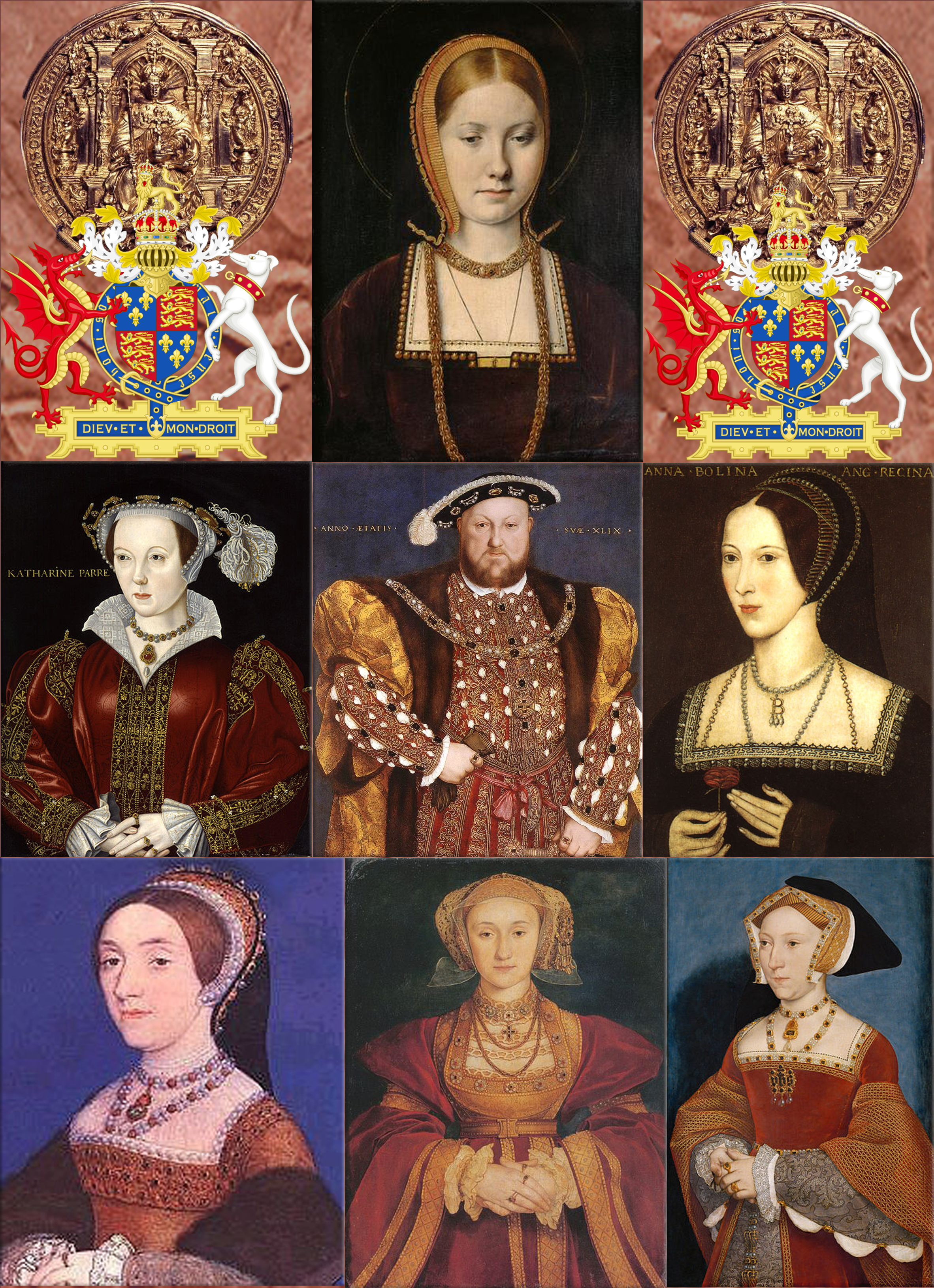
Pope Paul III excommunicates Henry VIII.
Wikipedia Painting: Portrait of Pope Paul III;
Henry VIII Coat of Arms and Seal of Henry VIII of England; Catherine of Aragon as a young widow, by court painter Michael Sittow, 1502; Anne Boleyn, Henry's second queen; a later copy of an original painted 1534; Jane Seymour, Henry's third wife; Anne of Cleves, Henry's forth wife by Hans Holbein the Younger, 1539; Catherine Howard, Henry's fifth wife, by Hans Holbein the Younger, 1540; Catherine Parr, Henry's sixth and last wife.
December 17th, 1577

Sir Francis Drake sails fromm Plymouth, England, on a secret mission to explore the Pacific Coast of the Americas for English Queen Elizabeth I.
Wikipedia Image: The Golden Hinde: Drake started his famous circumnavigation of the world from Plymouth, England, November 15, 1577, passed through the Straight of Magellan (southern tip of South America) into the Pacific, coasted up the western shores of the Americas, crossed to Asia and the Philippines, and finally returned to Britain on September 26, 1580.
December 17th, 1600
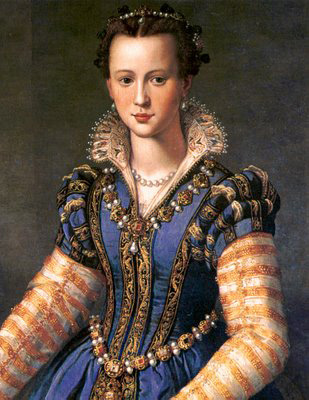
Marriage of Henry IV of France and Marie de' Medici.
Wikipedia Painting: Portrait of Marie de' Medici.
December 17th, 1718
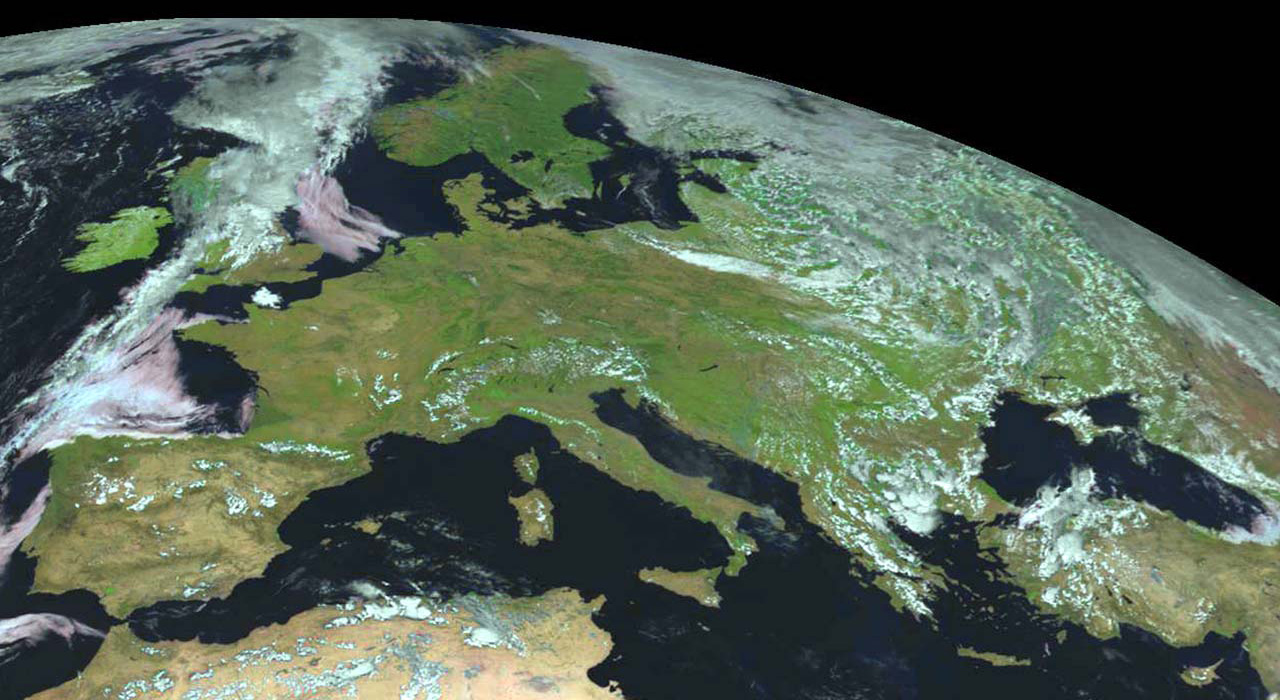
Great Britain declares war on Spain.
Wikipedia Image: Western Europe Satellite, credit NASA.
December 17th, 1777
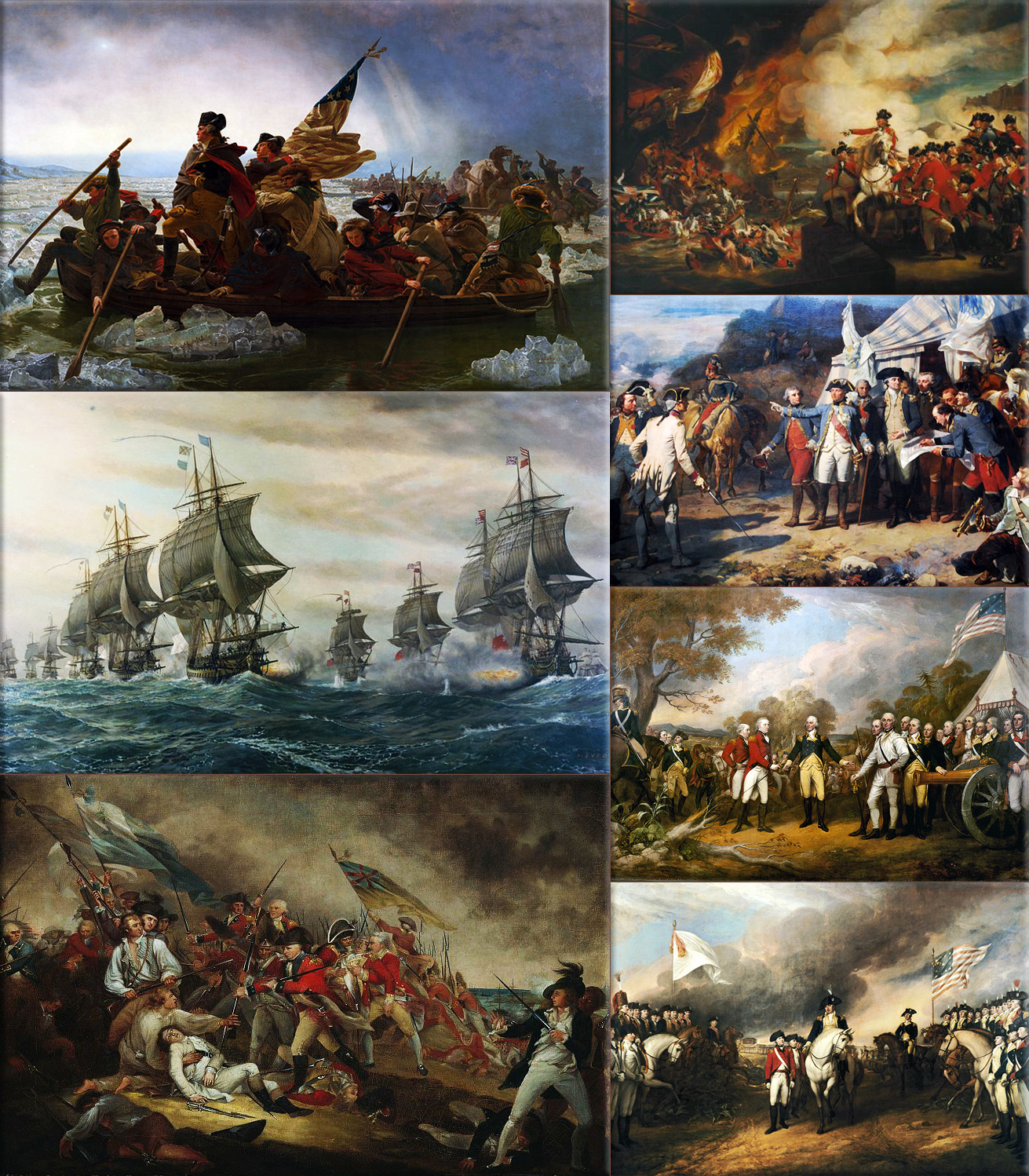
American Revolutionary War:
1777 - France formally recognizes the United States of America.
Wikipedia Paintings: Washington Crossing the Delaware, by Emanuel Leutz; Battle of the Chesapeake, French (left) and British (right) lines; Battle of Bunker Hill, The Death of General Warren at the Battle of Bunker Hill by John Trumbull; The Defeat of the Floating Batteries at Gibraltar, September 13, 1782, by John Singleton Copley; Washington and the Comte de Rochambeau at Yorktown, 1781; "The surrender at Saratoga" shows General Daniel Morgan in front of a French de Vallière 4-pounder; Surrender of Cornwallis at Yorktown by (John Trumbull, 1797).
December 17th, 1790
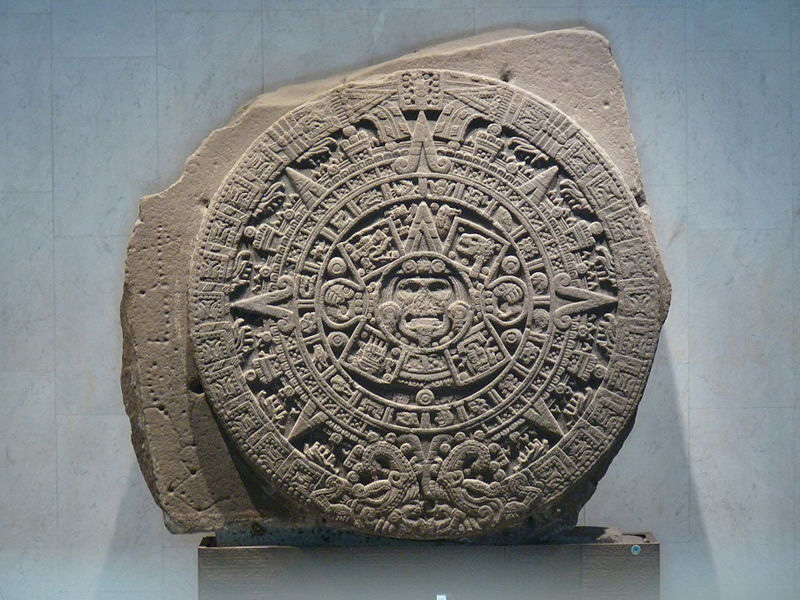
Discovery of the Aztec calendar stone.
Wikipedia Photo: Aztec calendar stone, credit National Museum of Anthropology, Mexico City.
December 17th, 1807

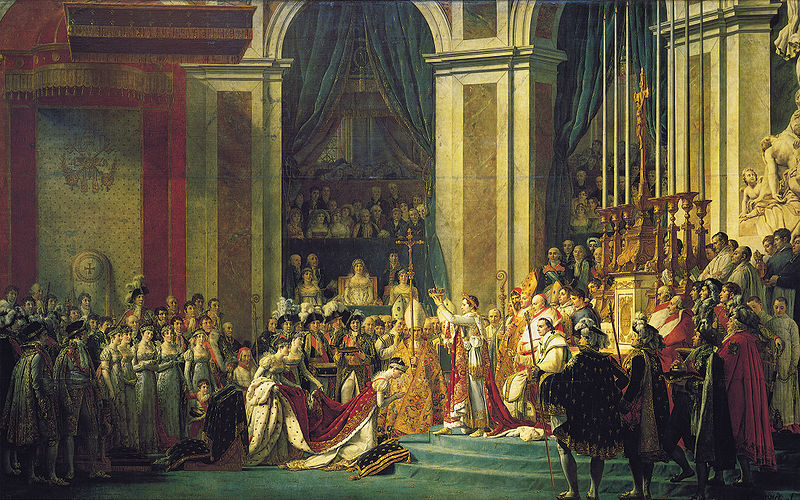
French Revolutionary Wars / Napoleonic Wars:
1807 - France issues the Milan Decree, which confirms the Continental System.
Wikipedia Painting: Battle of Trafalgar: The British HMS Sandwich fires to the French flagship Bucentaure (completely dismasted) in the battle of Trafalgar;
Napoleon in Berlin (Meynier). After defeating Prussian forces at Jena, the French Army entered Berlin on 27 October 1806;
Battle of the Bridge of Arcole Napoleon Bonaparte leading his troops over the bridge of Arcole, by Horace Vernet;
Napoleon as King of Italy (Appiani);
Napoleon Crossing the Alps (David). In 1800 Bonaparte took the French Army across the Alps, eventually defeating the Austrians at Marengo;
Charge of the Russian Imperial Guard cavalry against French cuirassiers at the Battle of Friedland, 14 June 1807;
Battle of Borodino as depicted by Louis Lejeune. The battle was the largest and bloodiest single-day action of the Napoleonic Wars;
Napoleon's withdrawal from Russia, a painting by Adolph Northen;
Wellington at Waterloo by Robert Alexander Hillingford;
Napoleon is often represented in his green colonel uniform of the Chasseur à Cheval, with a large bicorne and a hand-in-waistcoat gesture.
Coronation of Napoleon I - Consecration of the Emperor Napoleon I and Coronation of the Empress Josephine
December 17th, 1812
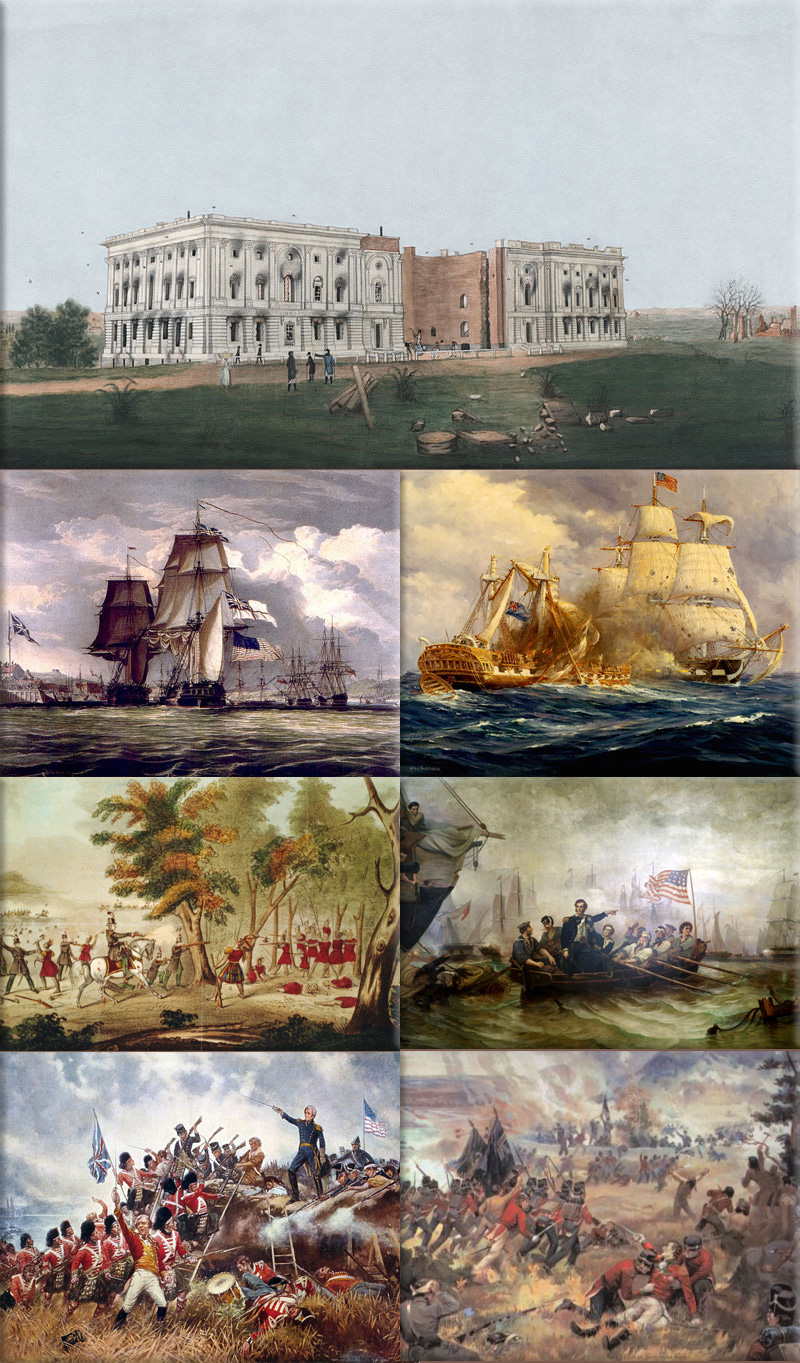
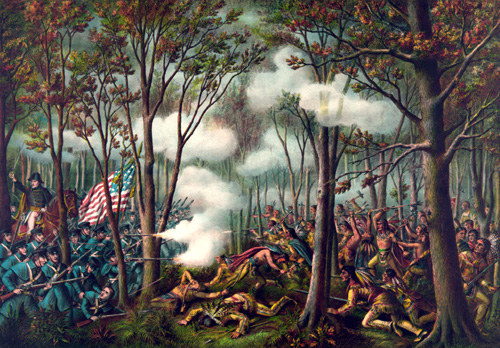
War of 1812:
1812 - Battle of the Mississinewa; United States forces attack a friendly Lenape village.
Wikipedia Painting: Damage to the US Capitol after the Burning of Washington; HMS Shannon leading the captured American frigate USS Chesapeake into Halifax, Nova Scotia (1813); USS Constitution vs HMS Guerriere; the death of Tecumseh at Moraviantown; Oliver Hazard Perry's message to William Henry Harrison after the Battle of Lake Erie began with what would become one of the most famous sentences in American military history: "We have met the enemy and they are ours; "Andrew Jackson leads the defence of New Orleans; The mortally wounded Isaac Brock spurs troops on at the Queenston Heights.
Battle of Tippecanoe; (November 7, 1811), between United States forces led by Governor William Henry Harrison of the Indiana Territory and Native American warriors associated with the Shawnee leader Tecumseh, chromolithograph by Kurz & Allison, 1889.
December 17th, 1837
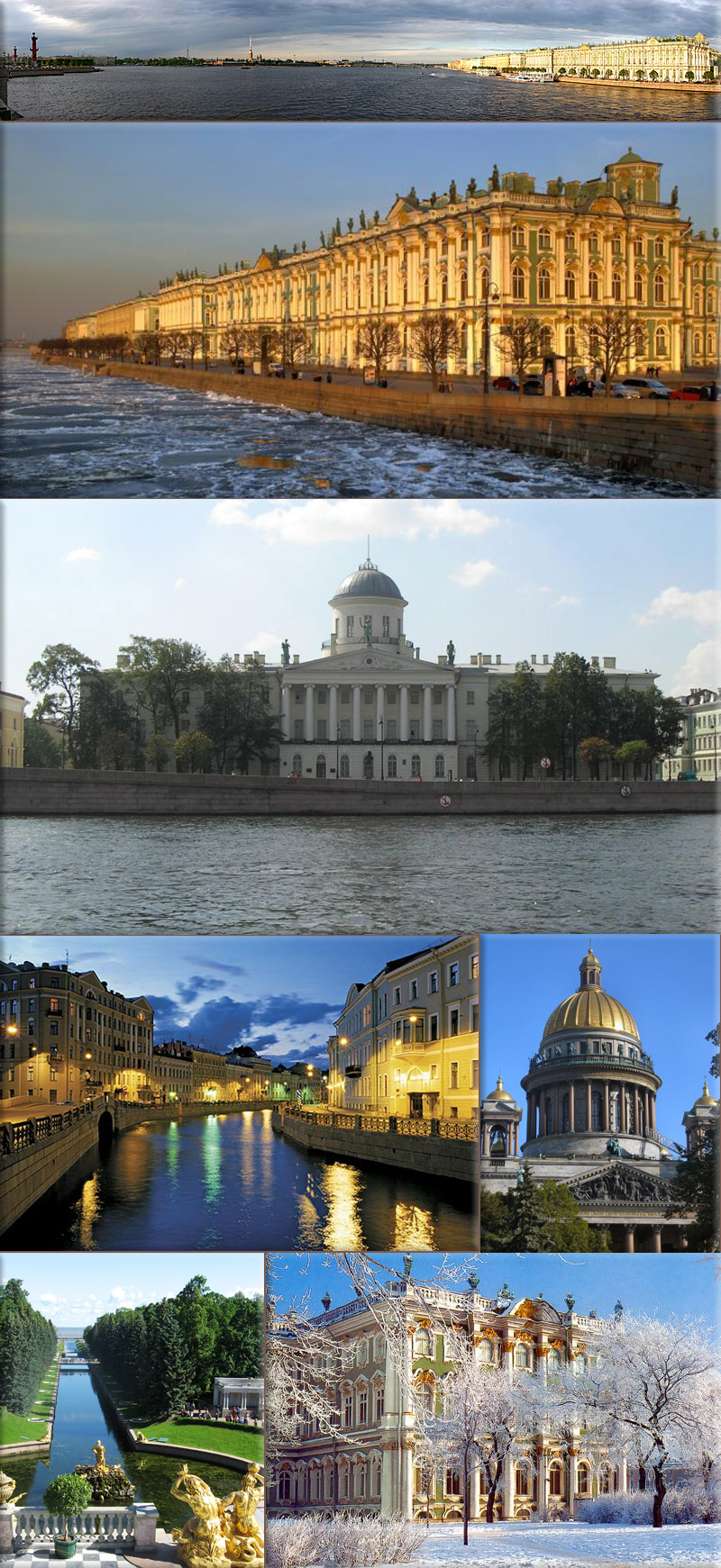
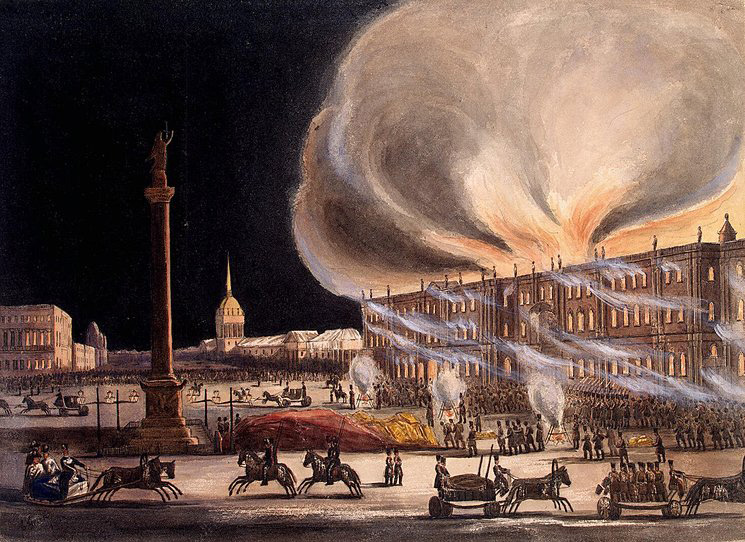
Fire in the Winter Palace of Saint Petersburg.
Wikipedia Image: Saint Petersburg: Panorama from Palace Bridge;
Pushkin House is established in Saint Petersburg to preserve the cultural heritage (Institute of Russian Literature, as seen from across the Neva);
Saint Petersburg, Russia. © Digital Vision / Getty Images;
Saint Isaac's Cathedral;
Winter Palace is one of the most splendid buildings in Saint Petersburg.
Watercolor: Fire in the Winter Palace, watercolour by B. Green, 1838
December 17th, 1862
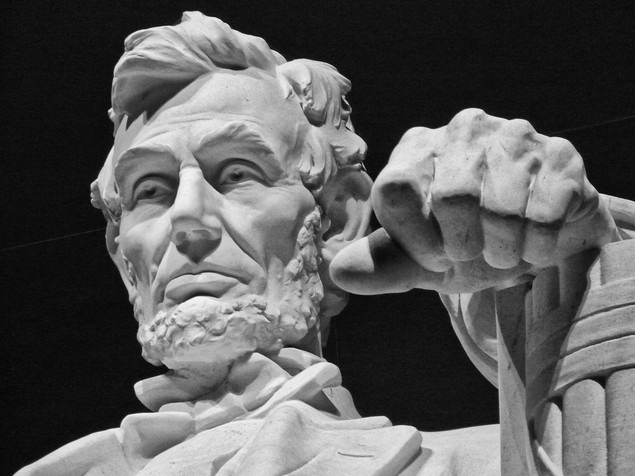
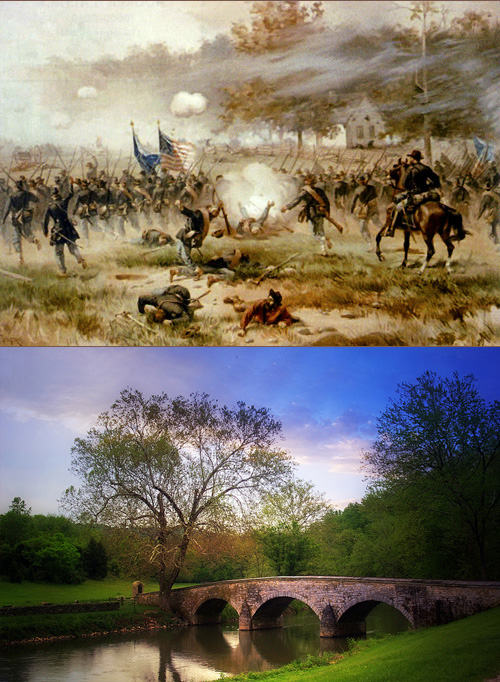
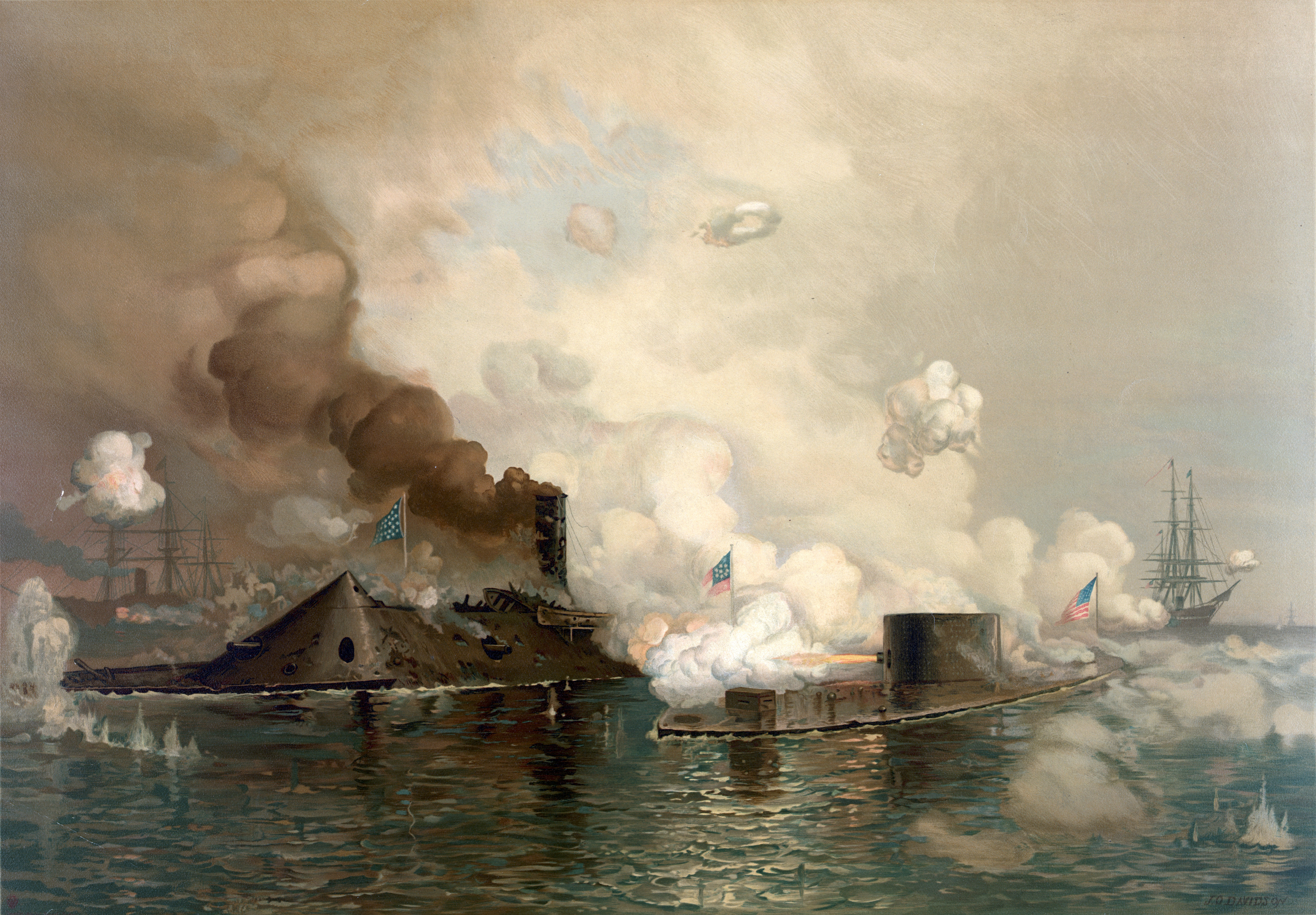
American Civil War:
1862 - Union General Ulysses S. Grant issues General Order No. 11 expelling Jews from Tennessee, Mississippi and Kentucky.
Wikipedia Image: ● Lincoln Memorial; an American national monument built to honor the 16th President of the United States, Abraham Lincoln - located on the National Mall in Washington, D.C. across from the Washington Monument.
● The northern army led by George McClellan and the southern army led by Robert E. Lee met at Antietam Creek, Maryland in September, 1862. It was a bloody battle where 13,000 Confederates and 12,000 Union troops died in just one day. McClellan had hesitated to attack before the battle thus letting the southern troops regroup. Also, he had saved reserves and refused to use them at the end of the battle thinking that Lee was holding reserves for a counterattack, even though those reserves didn't exist. The Union victory stopped Lee's northward advance and was a turning point in the war.
● Battle of Antietam / Stone Bridge at Antietam Battlefield - Sharpsburg, Maryland
● First Battle Between Ironclads: CSS Virginia/Merrimac (left) vs. USS Monitor, in 1862 at the Battle of Hampton Roads.
● Although photography was still in its infancy, war correspondents produced thousands of images, bringing the harsh realities of the frontlines to those on the home front in a new and visceral way. The Atlantic.
December 17th, 1865
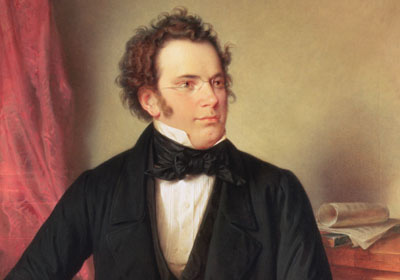
First performance of the Unfinished Symphony by Franz Schubert.
Wikipedia Photo: Franz Schubert: in a short lifespan of just nearly 32 years, Schubert was a prolific composer, writing some 600 Lieder, nine symphonies (including the famous "Unfinished Symphony"), liturgical music, operas, some incidental music, and a large body of chamber and solo piano music.
December 17th, 1903
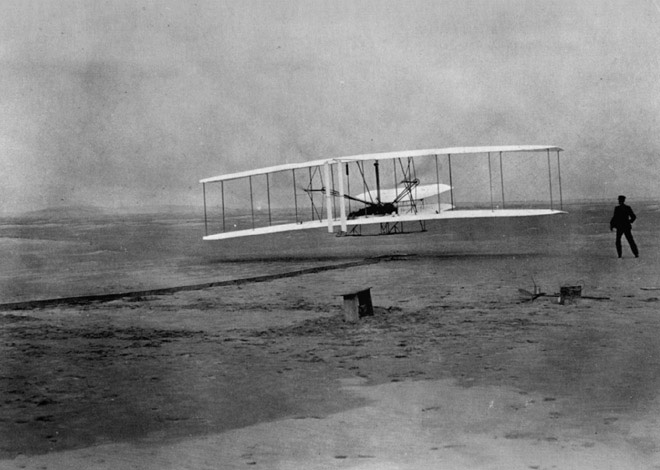
Wright brothers make their first powered and heavier-than-air flight in the Wright Flyer at Kitty Hawk, North Carolina.
Wikipedia Photo: 1903; Orville Wright successfully makes a flight in a heavier-than-air machine that takes off from level ground under its own power and is controlled during flight. He flies the first airplane.
December 17th, 1935

First flight of the Douglas DC-3 airplane.
Wikipedia Image: Douglas DC-3: In the late 1930s, the Douglas DC-3 passenger airplane was the most popular plane in the sky. It became one of the best-selling commercial airframes ever. More than 10,600 were produced. One version, the Douglas Sleeper Transport, had bunk beds like a train sleeper car. The military version was called the C-47 Skytrain, credit Boeing.
December 17th, 1938
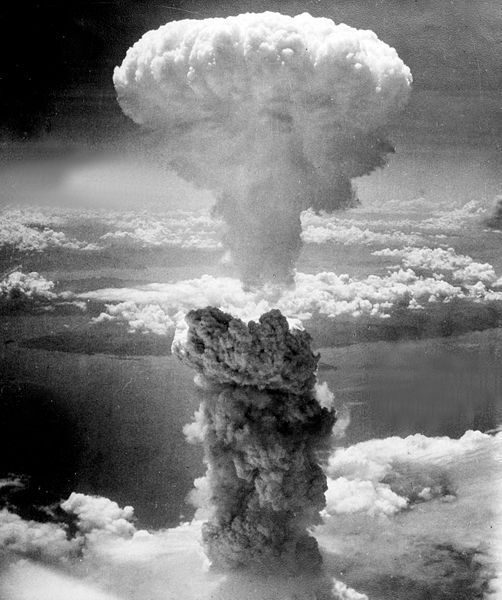
Otto Hahn discovers the nuclear fission of the heavy element uranium, the scientific and tecnological basis of nuclear energy - thus opening the "Atomic Age" in the history of mankind.
Wikipedia Photo: The mushroom cloud of the atomic bombing of Nagasaki, Japan on August 9, 1945 rose some 18 kilometers (11 mi) above the bomb's hypocenter / The atomic bomb blast in Hiroshima, Japan, on 6 August 1945. Photograph: Peace Memorial Museum / EPA.
December 17th, 1939
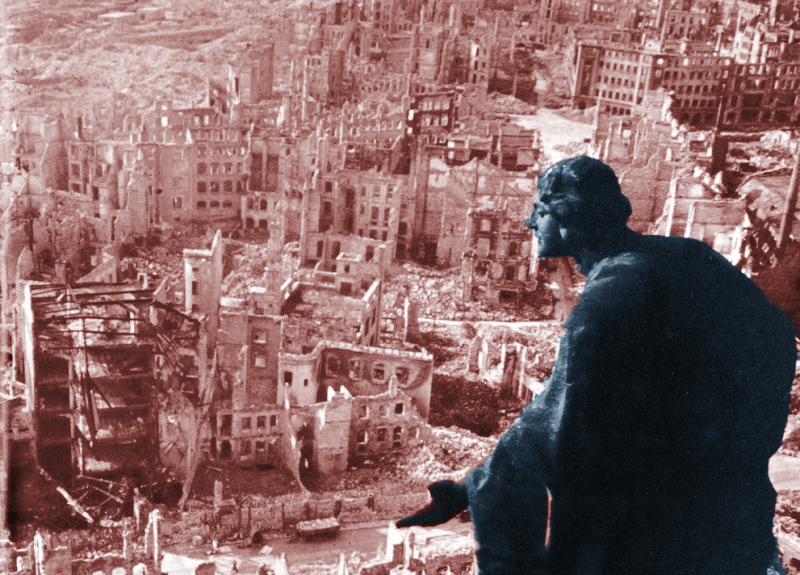

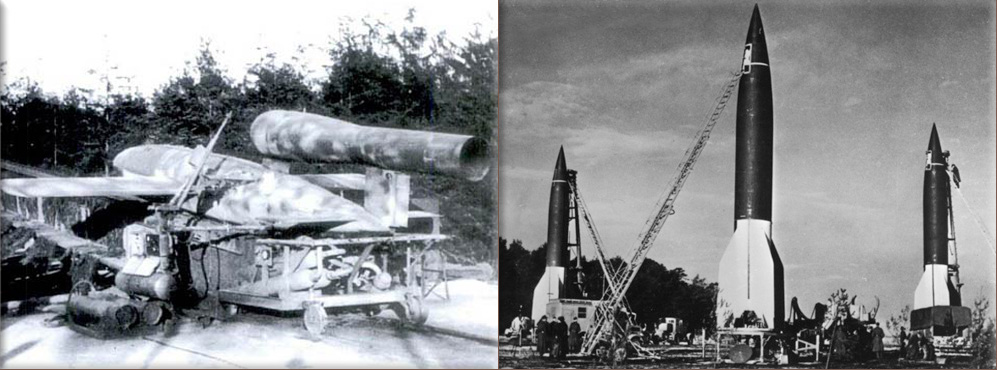
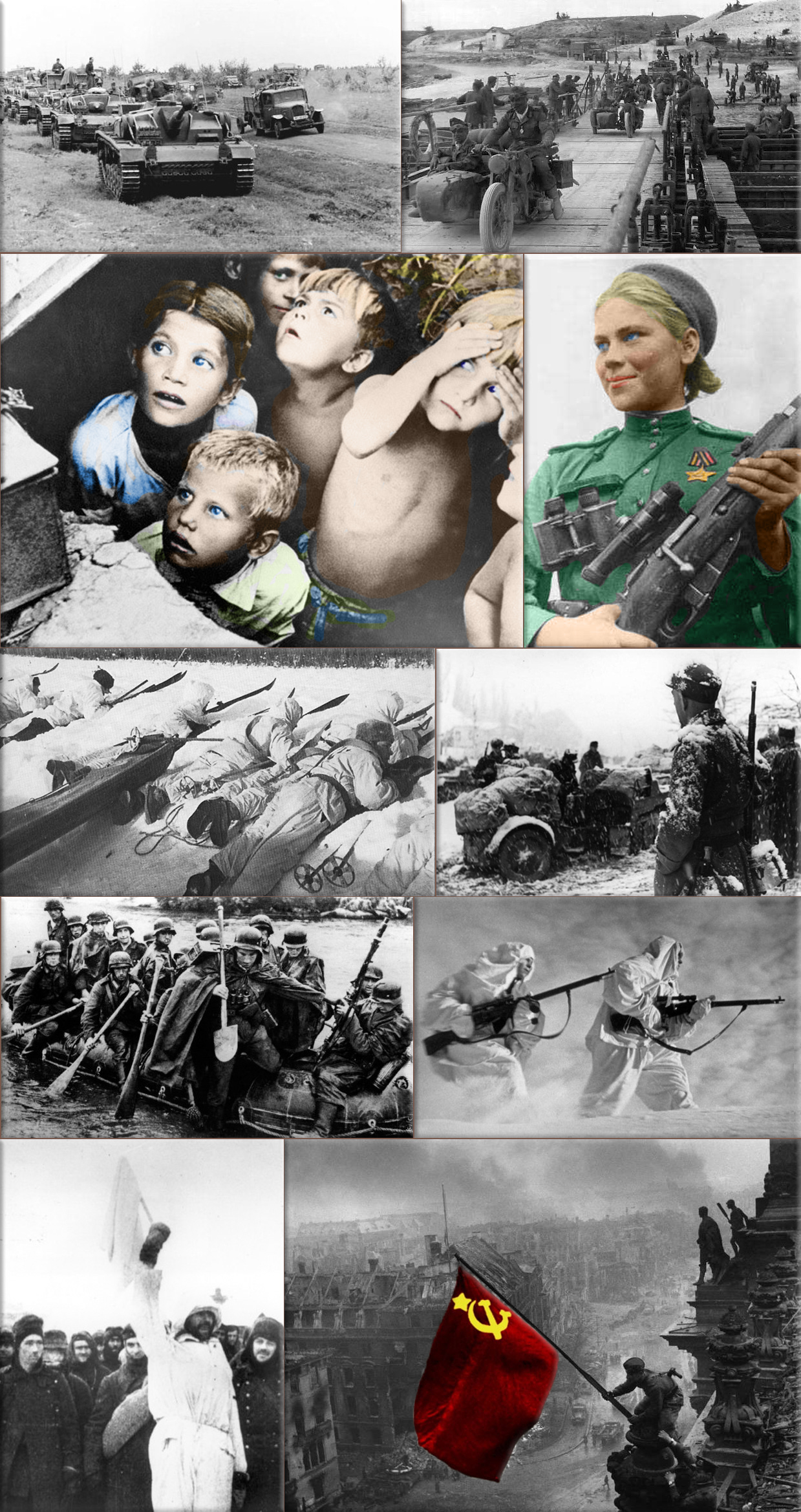
World War II:
1939 - Battle of the River Plate; The German battleship Admiral Graf Spee is scuttled by Captain Hans Langsdorff outside Montevideo.
1941 - Japanese forces land in Northern Borneo.
1944 - Battle of the Bulge; Malmedy massacre - American 285th Field Artillery Observation Battalion POW's are shot by Waffen-SS Kampfgruppe Joachim Peiper.
Wikipedia Photo: Bombing of Dresden in World War II; August Schreitmüller's sculpture 'Goodness' surveys Dresden after a firestorm started by Allied bombers in 1945.
USS Bunker Hill was hit by kamikazes piloted by Ensign Kiyoshi Ogawa and another airman on 11 May 1945. 389 personnel were killed or missing from a crew of 2,600; Ensign Kiyoshi Ogawa, who flew his aircraft into the USS Bunker Hill during a Kamikaze mission on 11 May 1945; Kamikaze Missions - Lt Yoshinori Yamaguchi's Yokosuka D4Y3 (Type 33 Suisei) "Judy" in a suicide dive against USS Essex. The dive brakes are extended and the non-self-sealing port wing tank is trailing fuel vapor and/or smoke 25 November 1944.
German V1 flying-bomb and V2 Rockets - Preparations for a Salvo Launch of V-2 Rockets in the Heidelager near Blizna (Poland) (1944), credit German History in Documents and Images GHDI.
Eastern Front (World War II); Germans race towards Stalingrad. August 1942; Soviet children during a German air raid in the first days of the war, June 1941, by RIA Novosti archive; Soviet sniper Roza Shanina in 1944. About 400,000 Soviet women served in front-line duty units Caucasus Mountains, winter 1942/43; Finnish ski patrol: the invisible enemy of the Soviet Army with an unlimited supply of skis; Men of the German Engineers Corps cross a river which is swollen after the first autumn rains, to strengthen bridges linking the German positions on the central front in Russia. by Keystone / Getty Images. October 1942; Russian snipers fighting on the Leningrad front during a blizzard. Photo by Hulton Archive / Getty Images, 1943; German soldiers surrendering to the Russians in Stalingrad, the soldier holding the white flag of surrender is dressed in white so that there could be no doubt of his intentions, a Russian soldier is on the right of the photograph. by Keystone / Getty Images, January 1943.
December 17th, 1947
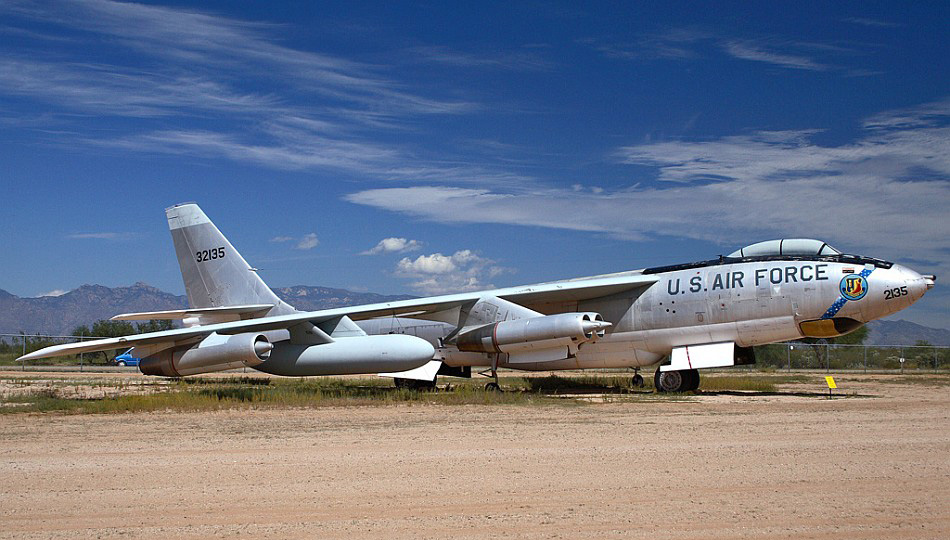
Boeing B-47 Stratojet strategic bomber.
Wikipedia Photo: Boeing B-47 Stratojet (Model 450): The Boeing B-47 was the country's first swept-wing multi-engine bomber. It represented a milestone in aviation history and a revolution in aircraft design (Every large jet aircraft today is a descendant of the B-47), credit © David Marshall / Boeing.
December 17th, 1950
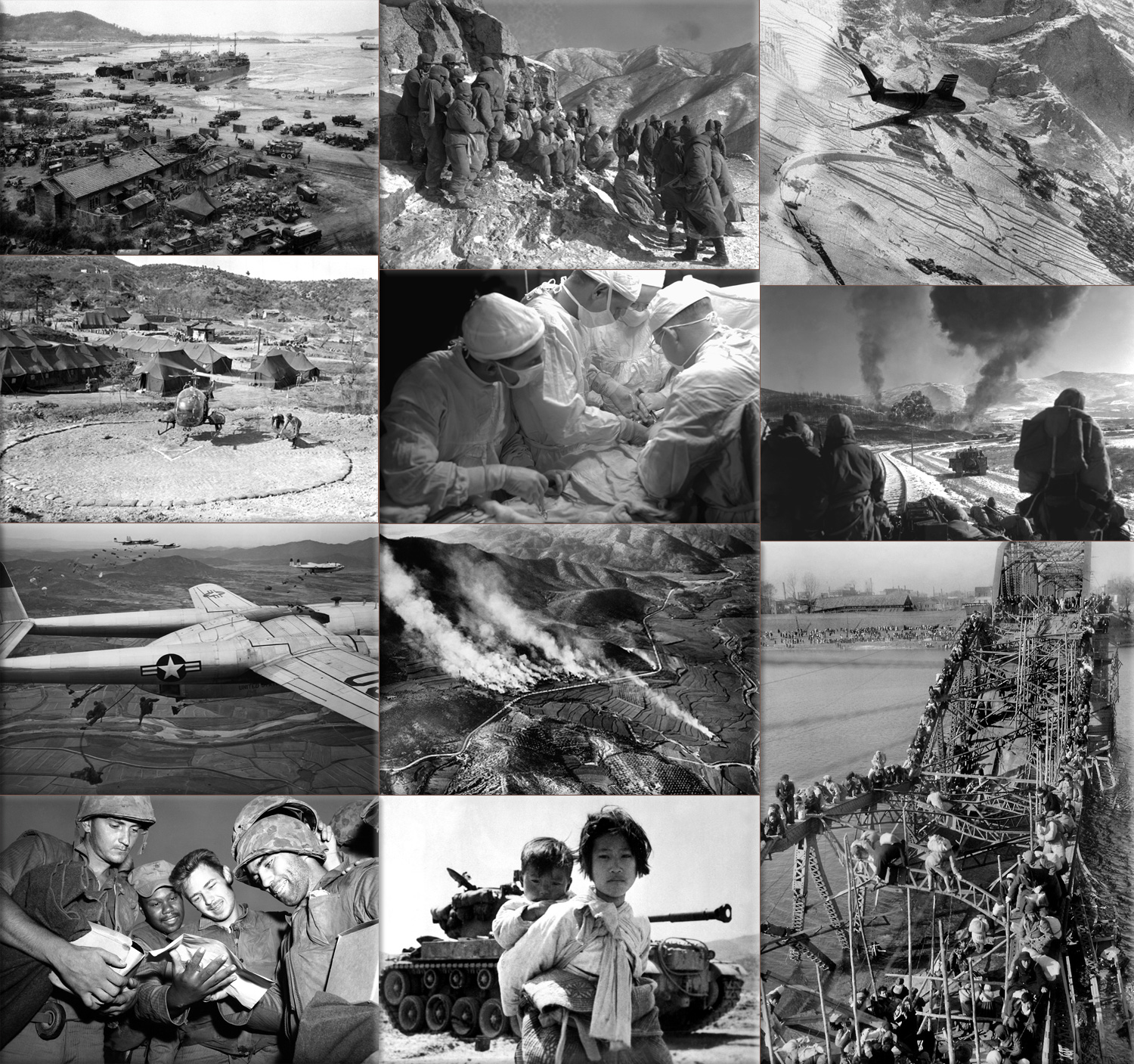
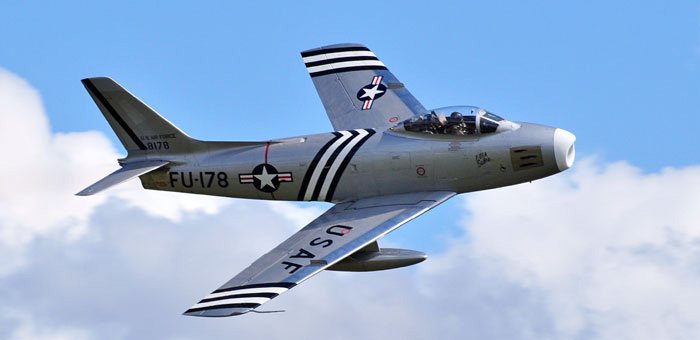
Korean War:
1950 - North American F-86 Sabre's first mission over Korea.
Wikipedia Photo: Korean War Collage credit, The Big Picture, Boston Globe - (Associated Press; U.S. Department of Defense / SGT. F.C. Kerr; AP Photo; U.S. Department of Defense / TSGT. Charles B. Tyler; U.S. Department of Defense / TSGT. Charles B. Tyler; U.S. Department of Defense / TSGT. Robert H. Mosier; AP Photo / Max Desfor; U.S. Department of Defense / CPL. P. McDonald; AP Photo / Max Desfor; AP Photo/George Sweers; U.S. Navy / Maj. R.V. Spencer, UAF; AP Photo / Max Desfor).
North American F-86 Sabre (Sabrejet) was a transonic jet fighter aircraft. Produced by North American Aviation, the Sabre is best known as America's first swept wing fighter which could counter the similarly winged Soviet MiG-15 in high-speed dogfights over the skies of the Korean War
December 17th, 1957
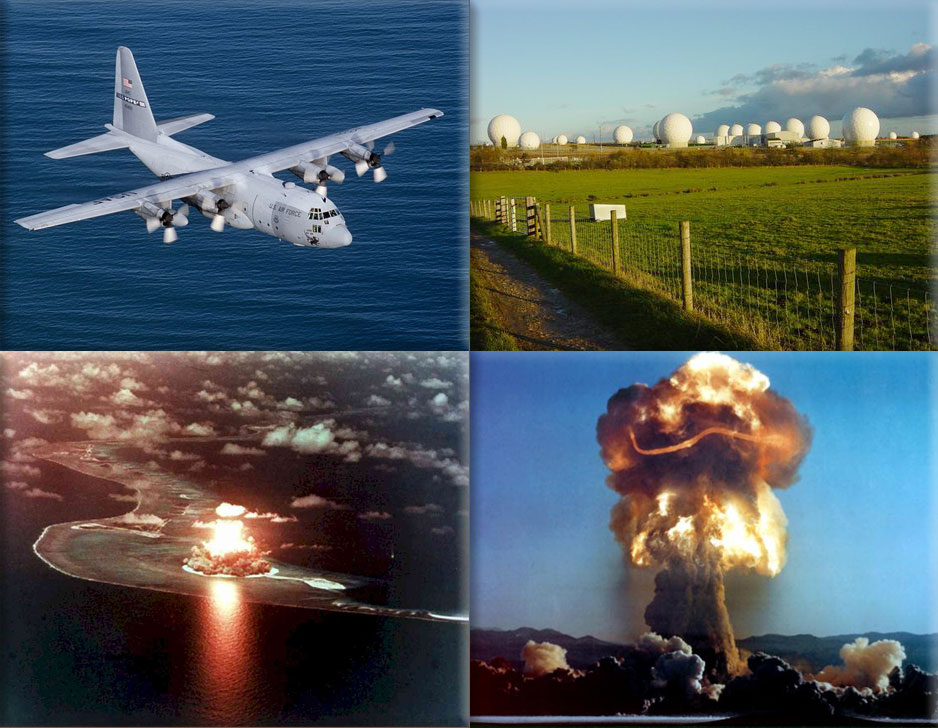
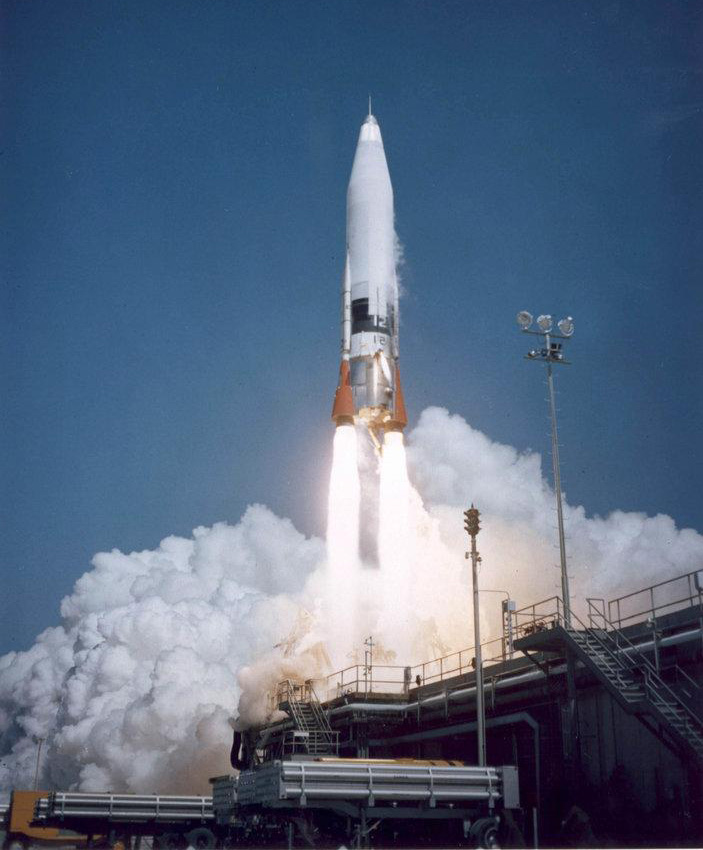
Cold War:
1957 - United States successfully launches the first Atlas intercontinental ballistic missile (ICBM) at Cape Canaveral, Florida.
1969 - SALT I (Strategic Arms Limitation Treaty); Negotiators from the Soviet Union and the United States meet in Helsinki and begin talks.
Wikipedia Photo: Lockheed C-130 Hercules; RAF Menwith Hill, a large site in the United Kingdom, part of ECHELON and the UKUSA Agreement; New Zealand nuclear test, British nuclear tests near the Malden and Christmas Islands in the mid-Pacific in 1957 and 1958; Nevada nuclear tests, Nevada Division of Environmental Protection Bureau of Federal Facilities.
1958 test launch of an U.S Air Force Atlas Intercontinental Ballistic Missile (ICBM), developed by Lockheed Martin.(U.S. Air Force.
December 17th, 1973
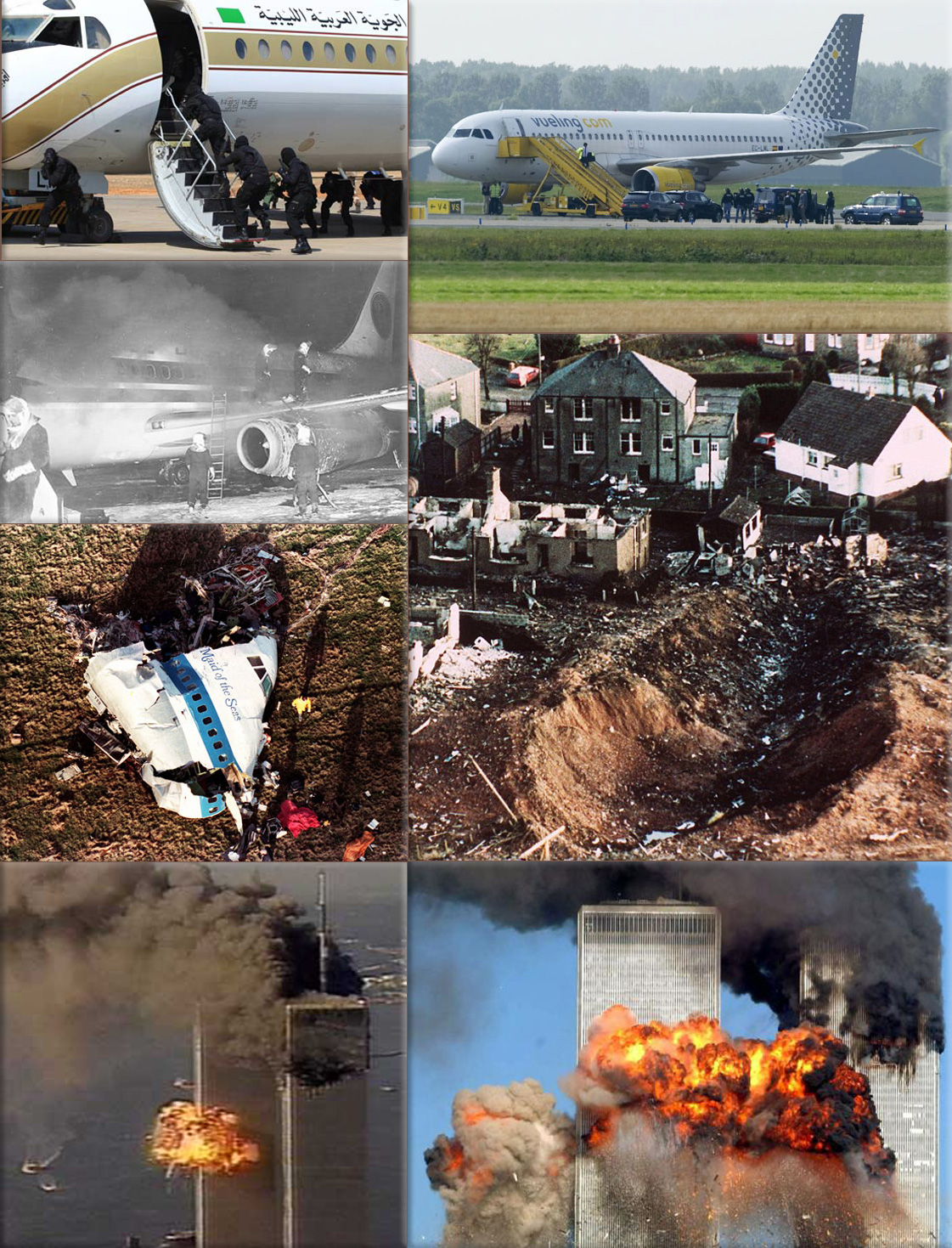
Aircraft hijacking:
1973 - Terrorism: 30 passengers are killed in an attack by Palestinian terrorists on Rome's Leonardo da Vinci Airport.
Wikipedia Photo: Hijacked Sudan passenger jet lands in Libya, August 27, 2008; Amsterdam false alarm revives airplane hijacking memories, Passengers leave a Vueling plane at a field near Amsterdam Airport after a hijack scare last week that led the Netherlands to scramble F-16 fighter jets, September 2, 2012 Reuters; Egypt Air flight 648 was hijacked in November 1985 by the terrorist Abu Nidal organisation, credit AP; Cockpit section of Pan Am 103 wreckage following a mid-air explosion, December 21, 1988; 747 Pan Am airliner that exploded and crashed over Lockerbie, Scotland, with 259 passengers on board in 1988; Debris lies in a deep gash through the town of Lockerbie, Scotland, caused by the crash of Pan Am flight 103, credit AP; Flight 175 hits the WTC South Tower. The picture was taken from a traffic helicopter. credit: WABC 7/ Salient Stills; Hijacked United Airlines Flight 175 from Boston crashes into the South Tower of the World Trade Center and explodes at 9:03 a.m. on September 11, 2001 in New York City, credit Spencer Platt / Getty Images.
December 17th, 1983
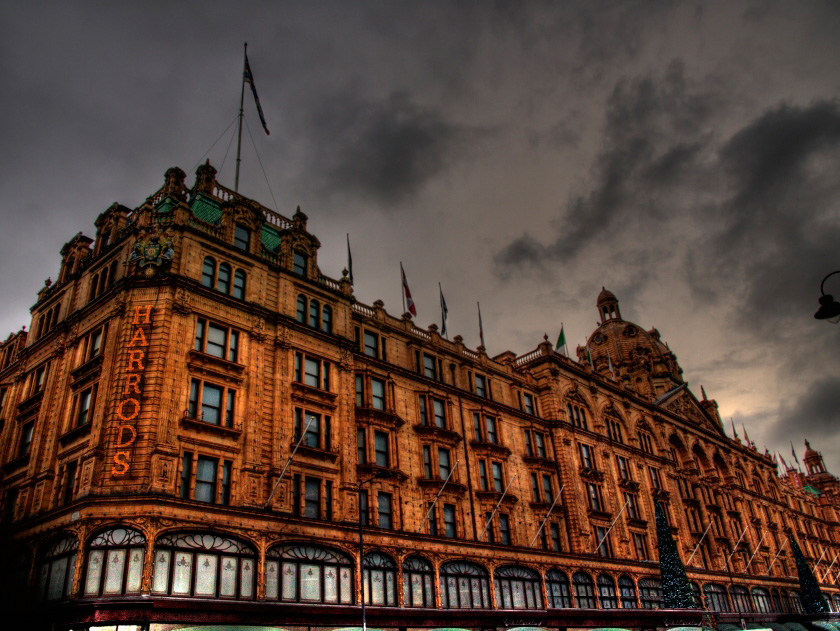
Harrods bombing: the Provisional Irish Republican Army (IRA) bombs Harrods Department Store in London, killing six people.
Wikipedia Photo: Facade of Harrods Department store in London, UK, credit © Jan Kranendonk.
December 17th, 1989
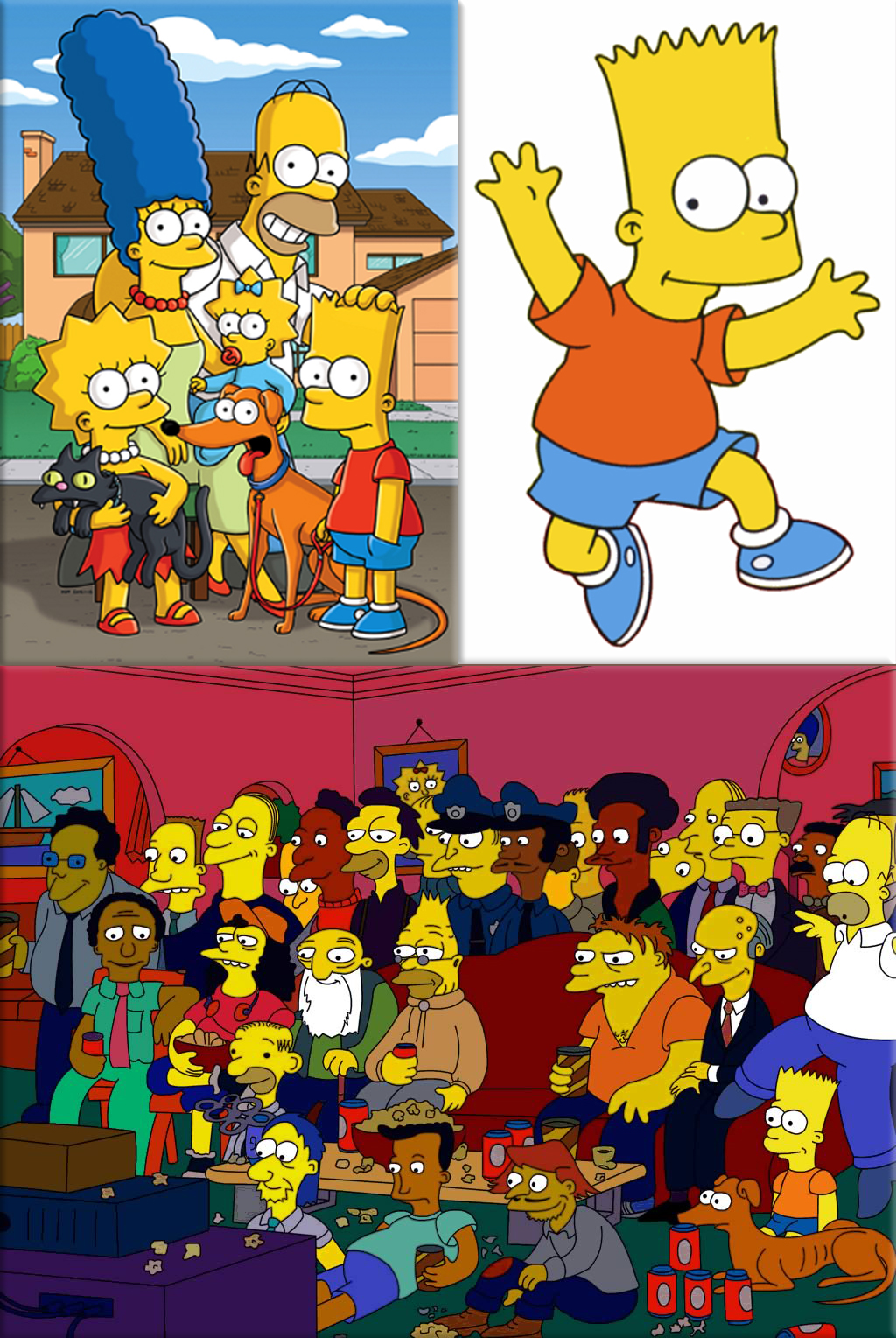
The first episode of television series The Simpsons, "Simpsons Roasting on an Open Fire", airs in the United States.
Wikipedia Image: The Simpsons is an American animated sitcom created by Matt Groening for the Fox Broadcasting Company (The series is a satirical parody of a middle class American lifestyle epitomized by its family of the same name, which consists of Homer, Marge, Bart, Lisa and Maggie).
December 17th, 1997

Firearms (Amendment) (No. 2) Act 1997: extends the state's gun ban to include all handguns—with the exception of antique and show weapons in the United Kingdom.
Wikipedia Photo: Firearms (Amendment) (No. 2) Act 1997: Firearms ban - extends the state's gun ban to include all handguns—with the exception of antique and show weapons in the United Kingdom.
